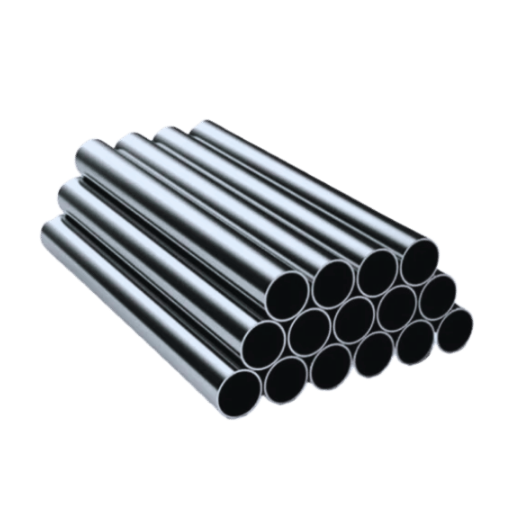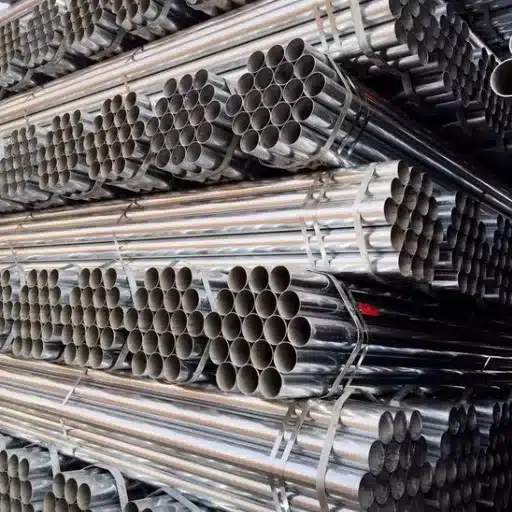Seamless steel pipes are a critical component in a wide array of industrial applications, admired for their strength, reliability, and versatility. Unlike welded alternatives, these pipes are manufactured without joints or seams, which contributes to their uniform construction and enhanced structural integrity. Whether you’re involved in construction, energy production, transportation, or manufacturing, understanding the specifications and uses of seamless steel pipes is essential for selecting the right material for your project. This guide will provide an in-depth look at the properties, grades, and industrial applications of seamless steel pipes, equipping you with the knowledge to make informed decisions while enhancing operational efficiency.
What is a Seamless Steel Pipe?
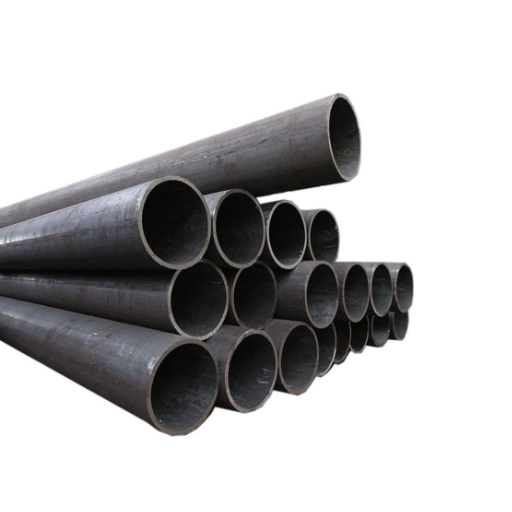
How is a Seamless Pipe Manufactured?
Seamless steel pipes are devoid of welds or seams. This gives them the edge in having superior strength, enhanced durability, and unmatched resistance under astounding amounts of pressure. Pipes of this nature are best suited for demanding environments like oil and gas pipelines, boiler tubes, and structural components in heavy industries. Seamless steel pipes undergo a specialized procedure to guarantee consistency and high-quality standards. The procedure initiates with a solid cylindrical piece of steel, or billet. Billet is pre-heated to a precise temperature before being pierced with a rotary piercing machine, turning it into a hollow tube.
The remaining steps request the creation of internal mechanisms, such as the elongation, which further shape and stretch the tube to obtain the desired dimensions. From rough shaping over the mandrel, which aids in honing the pipe’s internal diameters and wall thickness, to further steps like cold rolling and heat treatment. All are dependent on customer application requirements
Every single step done, such as ensuring a higher degree of uniformity helps with smooth reliability under extreme stress, completing the end goal of tailoring a seamless steel pipe while simultaneously increasing its strength and reliability. Seamless steel pipes are classified without welds which helps provide them with superb strength while guaranteeing economic value.
Benefits of Using Seamless Pipes in Industries
Because seamless steel pipes are not welded at the joints, their composition is homogenous throughout and gives them exceptional strength and resistance to damage. Even while under immense pressure or exposure to exceedingly high or low temperatures, they do not easily break, leak, or deform. This is hugely beneficial to industries like oil and gas, chemical processing, and power generation, because, unlike other pipes, seamless pipes do not pose a safety risk and can be used in harsh operational conditions without losing efficiency.
Seamless pipes stand as an industry standard due to their superior performance in high-pressure applications. With no seams present, the chances of a weak point failing under stress are low when compared to their welded counterparts. This makes seamless pipes ideal for pipelines, heat exchangers, and boiler systems in heavy industry settings. Additionally, seamless pipes are superior corrosion and reaction resistant, which makes them very dependable when used to transport gaseous and liquid fluids that are corrosive.
Lastly, seamless pipes are engineered to be precise, which enhances their superior geometric uniformity along with a smoother internal bore. Seamless welded pipes enhance flow, voids in system maintenance, performance, and overall efficiency are reduced. This is crucial for industries that operate on very limited turnaround time, as seamless pipes achieve both economic needs while meeting stringent operational standards.
Difference Between Seamless and Welded Pipes
The differences between seamless pipes and welded pipes stem from their unique structural properties, methods of manufacturing, and application appropriateness. Seamless pipes do not have seams or weld joints due to being manufactured through extrusion or drawing processes, resulting in a uniform structure. The ideal environment for such high-strength pipes and pressure-tolerant structures is in oil and gas refineries, power generation facilities, and chemical processing plants, which is why these plants benefit from the seamless construction. The enhanced strength and elimination of weak portions allow them to withstand the harsh conditions seamlessly.
Structured welded pipes are more affordable due to having a simpler manufacturing process as they are produced by rolling flat steel plates into a cylindrical shape and subsequently welding along the edges. With less cost comes drawbacks, and in the case of welded pipes, the presence of the seam makes them slightly weaker, although more cost effective compared to seamless pipes. Pipes that are used for water transportation, lower-pressure applications, or where less demanding chemicals are present rely on welded pipes.
The requirements of a given application is mostly what determines the decision making process for the user of my pipes. Core requirements for extreme levels of stress combined with high temperature and pressure like environments will always require seamless pipes. To balance the performance without exceeding budget constraints, moderate environmental stresses can seamlessly be endured by welded pipes.
Decoding the Specifications of Seamless Steel Pipe
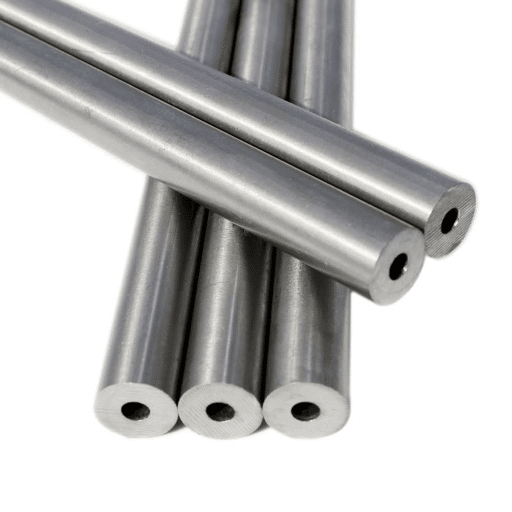
The Role of Carbon Steel and Alloy in Pipe Specifications
The seamless steel pipes’ performance aspects are majorly determined by the carbon steel and alloy materials. Carbon steel pipes are composed of iron and carbon with varying amounts of carbon as it directly impacts the strength, ductility and wear resistance. Due to the simple production methods, carbon steel pipes are cost-effective and are employed in situations where moderate strength, along with corrosion resistance, is required.
Alloy steel pipes contain additional elements such as chromium, molybdenum, and nickel to improve the pipes’ tensile strength, resistance to high temperatures, and extreme loads. For instance, chromium improves the alloy steel’s corrosion resistance; therefore, making it suitable for harsh environments, while molybdenum adds improvement to high-pressure settings. These attributes make alloy steel the ideal choice for demanding industries such as petrochemical refining, aerospace engineering, and power generation.
Moreover, both the carbon steel and alloy pipes’ composition and heat treatment processes have been modified with the aid of modern advancements in metallurgical processes to ensure precise customization for specific operational requirements. Ultimately the decision is made between carbon steel and alloy is heavily depended on the application’s environmental musts, costing, and industry standards.
Importance of Wall Thickness and Corrosion Resistance
Corrosion resistance is one of the other critical concerns when dealing with high temperature, moisture, or harsh chemical environments. Corrosion is bound to happen and, in turn, will decrease the wall thickness over time, compromising the safety aspects of the pipe. Depending on the environment’s severity, modern approaches now use stainless steel, duplex alloys, and nickel-based graded alloys. Other than these protective coatings, cyanide treatment methods and surface preparation processes can be added to the reduction of flaws of corrosion, whilst ensuring long-lasting outcomes.
In terms of pipes, wall thickness is one of the most paramount aspects which determines the capacity of a pipe to undergo internal pressure, avoid distortion, and maintain shape cyclically. In the absence of proper wall thickness, pipe failure becomes a guarantee in high-pressure situations which is hugely damaging in industrial systems.
New technologies such as predictive modeling and advanced non-destructive testing (NDT) methods enable the more effective monitoring of wall thickness and corrosion progression. Real-time structural assessment is possible with ultrasonic thickness gauging and eddy current testing, enabling the scheduling of preventive maintenance. These methodologies ensure that pipelines fulfill operational demands while simultaneously meeting stringent safety and durability requirements.
How to Choose the Right Steel Seamless Pipe for Your Needs?
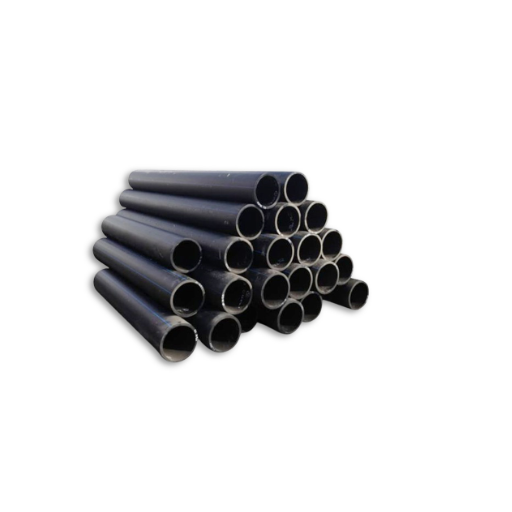
Factors to Consider in Industrial Applications
Choosing the right steel seamless pipe for an industrial purpose involves a careful study of the numerous factors for efficiency, safety, and cost savings. Below are the major requirements:
- Material Grade and Composition: The chemical makeup of a particular steel seamless pipe grade takes into account its mechanical features, like corrosion resistance of tensile strength, and yield strength. In the petrochemical industry, common grades are deliberately pre-processed for high-temperature services. In some cases, exposure to acid or high moisture environments deems a need for aggressive corrosion-resistant alloys like stainless steel or high chromium steel.
- Operating Pressure and Temperature: These two elements are critical in defining how well seamless steel pipes grade will fit the application needs and tolerances. Oil and major gas pipeline systems are tremendous in their need and rely on severe pressure systems to endure operational stress, requiring durability and dimensional accuracy. Wall Thickness and Diameter Specifications: The appropriate selection of the wall thickness and pipe diameter ensures that there is no structural failure under load. Pipes with a wall thickness that is too small are susceptible to deformation and bursting under high pressure, while oversized pipes would incur unnecessary expenditures with no improvement in performance.
- Corrosion-Resistance Requirements: The potential for corrosion must be evaluated thoroughly in areas dealing with chemical processing and water treatment or in the marine industry. The life of pipes can be improved with the use of surface treatments such as galvanization or epoxy coatings, as well as alloying constituents like molybdenum which enhance the corrosion resistance of pipes.
Analyzing these considerations enables business representatives to choose the steel seamless pipe that caters to their specific needs, minimizes system downtimes, and maximizes efficiency. With modern engineering and materials technologies, the selection process can be as versatile and enduring as the infrastructure of the industry, thus optimizing for any industrial scenario.
Comparing Stainless Steel and Carbon Steel Seamless Pipes
While evaluating stainless steel and carbon steel seamless pipes, it is important to pay attention to their different material compositions, mechanical properties, and applicability. Stainless steel seamless pipes are made of alloys of iron, chromium, and nickel, which makes them exceedingly resistant to corrosion, especially in moisture, chemical, or high temperature environments. Conversely, carbon steel seamless pipes are made of iron and carbon and have exceptional tensile strength and load-bearing ability, making them ideal for applications that require structural strength and superior mechanical performance.
The tensile strength of carbon steel seamless pipes is between 400 – 800 MPa, depending on the grade, and tends to have higher values than stainless steel pipes, which showcase tensile strength of 500 – 750 MPa, but do have better performance in terms of corrosion resistance. In addition, stainless steel pipes do not oxidize at high temperatures, often reaching 1,500°F (815°C), and carbon steel pipes need additional surface treatment to withstand high temperatures without degrading.
The stainless steel seamless pipes price estimation usually surpasses other forms due to the presence of alloying elements such as chromium and nickel. On the contrary, the long-term durability offered and lower maintenance requirements of stainless steel pipes may offset the initial investment in other sectors like chemical processing and the marine industries. On the other end of the spectrum, carbon steel seamless pipes provide a low-cost alternative to various projects that do not require high levels of corrosion resistance, including structural works or low-pressure systems.
Finally, the choice between these materials is largely dictated by the operating environment. In the food sector and pharmaceuticals, sanitary conditions necessitate the use of stainless steel and other alloys, whereas carbon steel is widely used in construction, oil rigs, and other industrial heavy machinery due to its high strength and cost-effectiveness. The best material for seamless piping systems can be determined by fully understanding the specific operational needs and environmental factors.
Exploring Industrial Grade Steel Pipes: Uses and Benefits
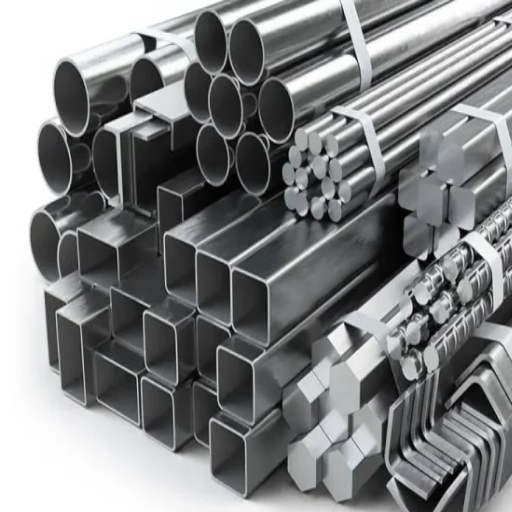
Applications in the Oil and Gas Industry
When it comes to the oil and gas sector, industrial-grade steel pipes are vital due to the extreme environmental and operational challenges that these industries serve. Seamless steel pipes are especially used because of their ability to withstand high pressure. These pipes are necessary for the effective long-distance transportation of crude oil, natural gas, and petroleum products, some of which are transported through extreme climates and rough terrain.
The materials most often used for these applications are carbon and stainless steel, with carbon steel’s cost-efficiency being ideal for high-pressure systems and stainless steel’s corrosion resistance excelling in offshore drilling and subsea environments. Designers have taken it a step further with duplex stainless steel, which combines high strength and improved resistance to stress corrosion cracking caused by chlorides from saltwater with harsh operators’ rigs.
Furthermore, steel pipes are essential in hydraulic fracturing, where they provide dependable delivery of water, chemicals, and proppants at high pressures. These specifications highlight the need for careful selection of construction materials, high accuracy in production processes, and systematic maintenance procedures to achieve durability in pipeline systems and ensure safe operations.
Role in Hydraulic and High-Pressure Systems
The reason steel pipes are prominent for use in frameworks that incorporate hydraulics and construction systems with high and severe pressure is because of their deceptive aspects, for instance, high deformation, and powerful pressurized handling capabilities. The device works on pressure exceeding 10,000 psi, and in instances including deep-well, oil extraction, and industrial water jet cutting, this proves to be very helpful. Not failing under material fatigue or breakage under such extremes makes it critically important, as when equipment goes through system malfunctions with extreme force, it poses severe outcomes, along with the risk of malfunctioning dynamic systems, destruction of structures, and potential hazards.
The use of CRAs also adds to the factors exerted by contemporary technology in improving the steel pipes. Their application not only enhances withstanding capabilities but also helps in resisting devices under pressure, but it also adds to fortifying performance under systemic strain encountered during offshore drilling and in chemical processing plants, like acids, salts, and high temperature gases. Adding nickel-based alloys or duplex stainless steel CRAs greatly enhances the performance in corrosive conditions encountered in offshore drilling plants.
To guarantee maximum effectiveness, steel pipes undergo strict steel pipe manufacturing processes as described in ASTM and API guidelines. Also, non-destructive testing (NDT) techniques like ultrasonic and hydrostatic pressure tests are used to identify pipe defects and validate their structural integrity before employing them in high-pressure situations. These methods help minimize risk, optimize service life, and sustain compliance with critical system regulations.
Contribution to the Pipeline and Petroleum Industries
The oil and gas industry heavily relies on steel pipes for the transportation of crude oil, natural gas, and refined petroleum products. Steel pipes are the backbone of these industries because of their remarkable strength and ability to resist corrosion and retain structure under supremely harsh operating conditions, whether it be pressure, temperature, or environmental corrosiveness. Enhanced safety and reliability of pipeline operations is becoming possible with modern pipes due to advanced metallurgical compositions and high-performance alloyed steel, which provide the needed corrosion resistance, integrity, and durability.
The manufacturing of High-Frequency Welded (HFW) and Seamless (SMLS) pipes marks significant progress with steel pipes. Their mechanical traits are unparalleled, and they are much more resistant to stress corrosion cracking. Such pipes are ideal for offshore drilling and subsea pipelines, where environmental conditions are most challenging. Along with these advancements, integration of smart monitoring technologies like specialized sensors within pipelines that enable collection of real-time data of flow rates, pressure, and leakage has enhanced efficiency, allowing better integrity management of pipelines while minimizing operational, environmental, and downtime risks.
Long-distance pipeline frameworks integral for distribution networks spanning across continents depend heavily on steel pipes. Steel pipes adapt effortlessly to construction requirements, including directional drilling and complex routing, which provides unmatched versatility. Cutting-edge research aimed at improving the performance and corrosion resistance of nanotechnology coatings and hybrid materials fuels the ongoing industry standards set by steel pipes. Collectively, these innovations reduce costs, boost operational longevity, and meet international energy consumption, all while upholding environmental and safety standards.
Understanding Industry Standards and Product Specifications
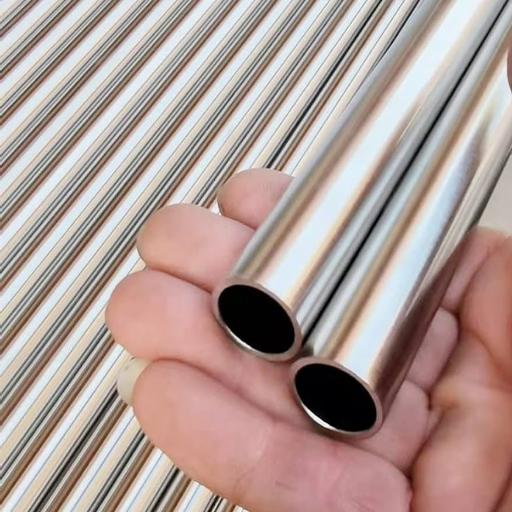
Common Industry Standards for Seamless Pipes
|
Standard |
Description |
Applications |
Common Sizes |
|---|---|---|---|
|
ASTM A106 |
High-temperature service carbon steel |
Boilers, power plants, and refineries |
1/8″ to 48″ |
|
ASTM A53 |
Welded/Seamless for pressure and mechanical |
Fluid handling, air, and gas lines |
1/8″ to 26″ |
|
API 5L |
Line pipe for oil and gas transportation |
Oil/gas transmission pipelines |
4.5″ to 80″ |
|
EN 10216 |
Seamless steel tubes for pressure purposes |
Boilers, pressure vessels |
10.2mm to 711mm diameter |
|
DIN 2448 |
Seamless circular tubes for mechanical uses |
General engineering applications |
4.0mm to 254mm thickness |
|
JIS G3454 |
Carbon steel pipes for pressure services |
Water, oil, and steam conveyance |
Various, per design |
|
IS 1239 |
Steel tubes suitable for water and steam |
General water and pipeline projects |
Up to 150mm |
|
GOST 8731 |
Seamless pipes for industrial needs |
Russia-standard industrial pipelines |
10mm to 630mm diameter |
These standards act as a framework to maintain the same level of quality, performance, and safety for all relevant processes related to seamless steel pipes. Each of them observes certain compliance with technical details appropriate to their purpose.
Ensuring Compliance with API Guidelines
Following API protocols is fundamental for achieving consistency across an industry that utilizes a pipeline system, especially in the oil, gas, and petrochemical sectors. API provides detailed guidelines that define intricate requirements about steel pipe materials, geometrically accurate cutouts, pressure boundaries, and testing benchmarks for specific seamless pipes. For example, line pipes meant for oil and natural gas transportation set and inline TCPs are divided into various grades, such as PSL1, PSL,2 which have various performance and quality capabilities.
With work in place under API protocols, pipelines are guaranteed to perform under predefined operational and environmental stress conditions without posing the possibility of structural failure, leakage, or expensive service interruption. Mechanical, chemical, and hydrostatic testing needs to be performed in the case of API compliance selected, and advanced inspection methods like ultrasonic testing (UT), radiographic testing (RT) have to be integrated. These precision tests allow for flaw detection, meaning only pipes that meet the stringent quality standards are prevented from being supplied to the customer.
Furthermore, adopting the API protocols promotes collaboration between international supply chains by maintaining equally high standards on production. For organizations putting their money into pipeline systems, ensuring conformance to these stipulations will safeguard asset integrity and offer vessel reliability with regard to emerging technologies and increased scope of works.
References
-
Understanding API 5L Pipe Specifications – This source covers various grades of pipes and their industrial applications.
-
Seamless pipes by applications – This article discusses the diverse applications of seamless pipes in construction, water supply systems, and more.
-
Applications and Advantages of Seamless Steel Pipes in Construction – This source highlights the use of seamless steel pipes in bridge construction and other structural applications.
Frequently Asked Questions (FAQ)
Q: What is the basic product description of seamless steel pipes?
A: Seamless steel pipes are a type of steel pipe that do not have a seam or weld-joint, making them ideal for various industrial applications due to their strength and durability. They are produced through a hot rolling process and are available in several grades and sizes to suit different needs.
Q: Who are the typical suppliers of seamless steel pipes?
A: Suppliers of seamless steel pipes often specialize in steel industrial products and offer a wide range of pipe sizes and grades. They cater to various industries such as energy, construction, and manufacturing, providing both standard and custom solutions for critical applications.
Q: What are the different types of steel pipes available for industrial use?
A: There are several types of steel pipes available, including seamless carbon steel pipes, seamless stainless steel pipes, and welded pipes. Each type has its advantages and is selected based on the specific requirements of the industrial project, such as strength, corrosion resistance, and pressure capacity.
Q: Why are seamless pipes often preferred for critical applications?
A: Seamless pipes are often preferred for critical applications due to their high toughness and the absence of welds, which can be potential weak points. This makes them suitable for use in high-pressure environments and structural applications where strength and durability are paramount.
Q: How does the process of galvanizing enhance seamless steel pipes?
A: Galvanizing involves coating seamless steel pipes with a layer of zinc to protect them from corrosion. This process enhances the pipes’ durability and extends their lifespan, making them suitable for use in environments where they are exposed to moisture and harsh conditions.
Q: What role does toughness play in the selection of seamless steel pipes?
A: Toughness is a crucial factor in the selection of seamless steel pipes, especially for industrial projects that involve high stress and impact. Pipes with high toughness can absorb energy without fracturing, making them ideal for applications requiring resilience and reliability.
Q: How are grooves and threads used in seamless steel pipes?
A: Grooves and threads are used in seamless steel pipes to facilitate connections and assembly in various industrial applications. Grooves allow for mechanical joining or gasket sealing, while threads enable pipes to be screwed together, ensuring secure and leak-proof connections.
Q: What are the advantages of using seamless stainless steel pipes in industrial settings?
A: Seamless stainless steel pipes offer excellent corrosion resistance, high toughness, and strength, making them suitable for various industrial applications. They are often used in environments where hygiene, temperature resistance, and longevity are critical, such as in the food and beverage, pharmaceutical, and petrochemical industries.

